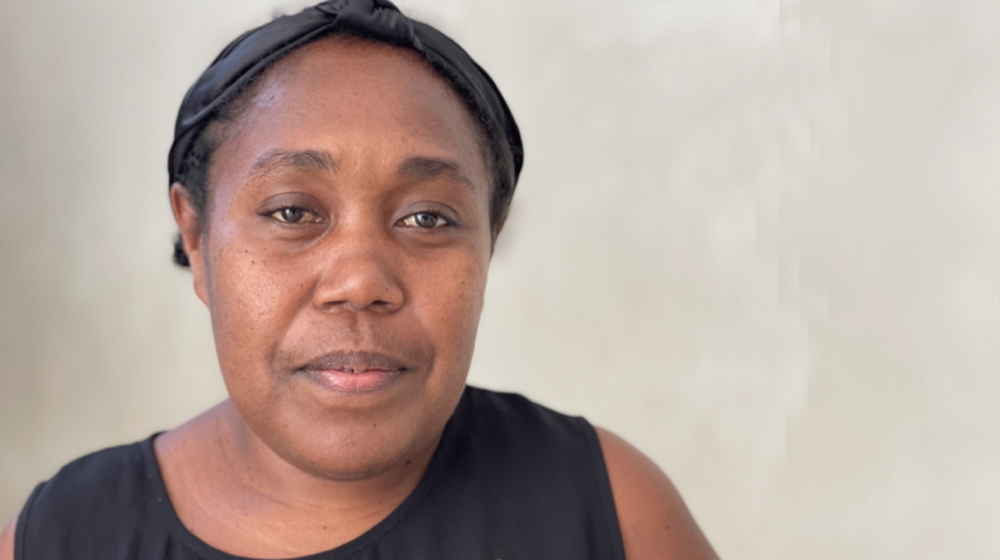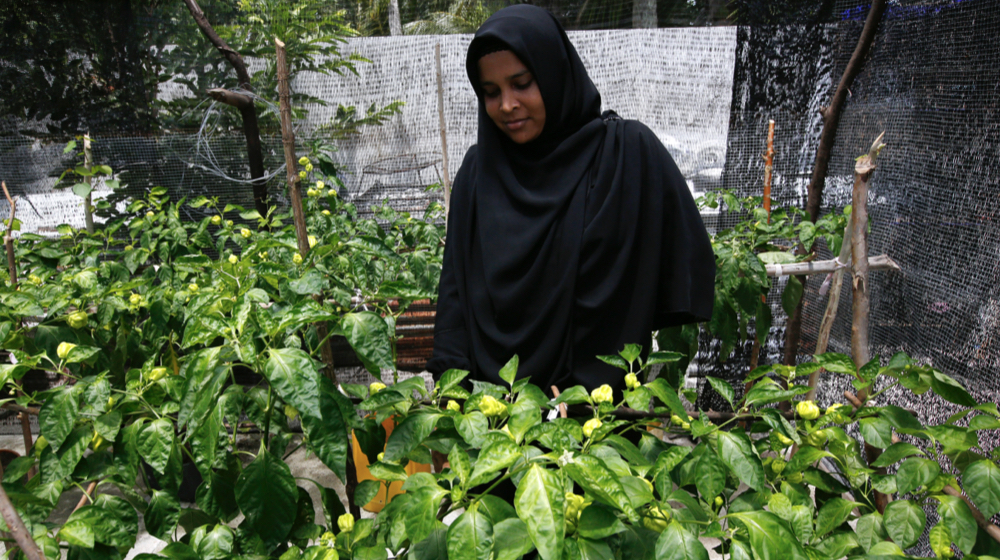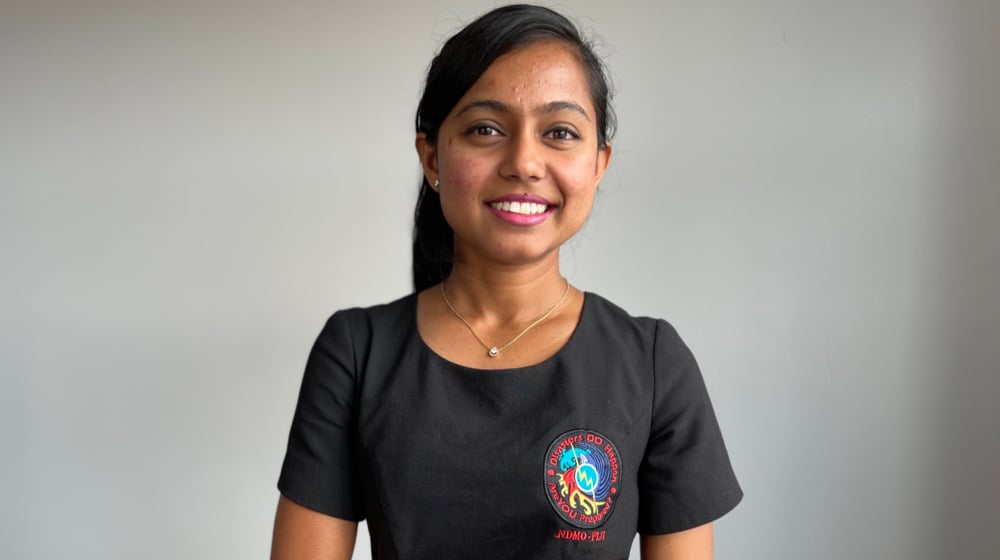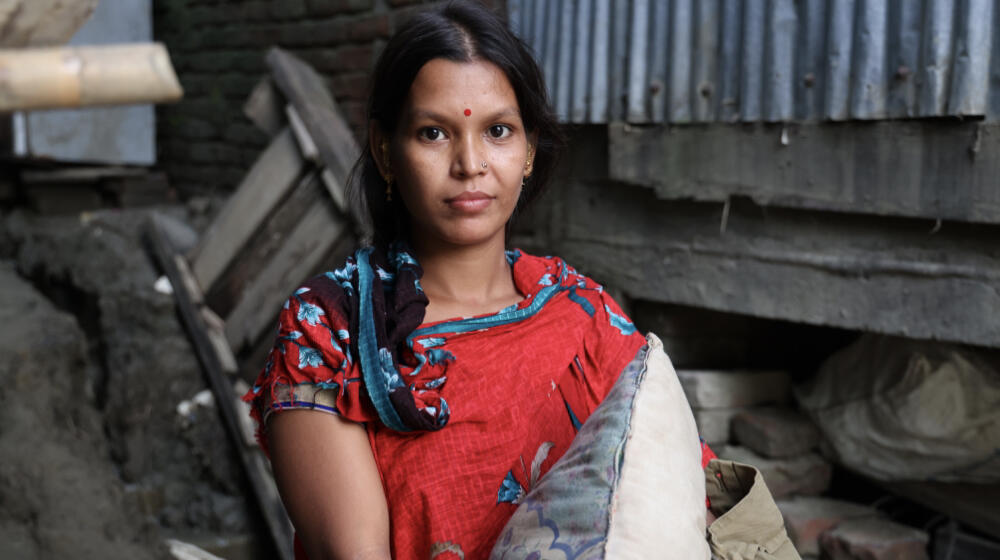Protecting and empowering youth for a disaster-free future
The Asia-Pacific region is the most disaster-prone in the world. In 2022 alone, over 140 disasters struck the region, leading to over 7,500 deaths and affecting over 64 million people.
Women and children face the brunt of these disasters as they are 14 times more likely to die than men due to various factors stemming from existing inequalities. Over 75 per cent of refugees and displaced persons at risk from war, persecution and natural disasters are women and children.
UNFPA addresses disaster resilience through a multi-layered strategy that encompasses resilience building, early warning systems, and immediate response with lifesaving services.
UNFPA, UNDRR and UN Women, have developed the Gender Action Plan to Support the Implementation of the Sendai Framework for Disaster Risk Reduction (Sendai GAP). This plan is instrumental in guiding and strengthening gender-responsive DRR strategies, recognizing the disproportionate impact of disasters on women and girls, and ensuring their active participation in resilience-building initiatives.
As leaders gather in the Philippines for the Asia-Pacific Ministerial Conference on Disaster Risk Reduction (APMCDRR), we wanted to celebrate a few young people reducing disaster risk in their communities.
Philippines: Desiree Dorias comes from Maasin City in southern Leyte. She lives in a region where teenage pregnancy is on the rise and extreme storms make it difficult for young people to get to health clinics. To help young people access services such as sexual and reproductive health and mental health counseling, Desiree worked with other youth leaders to help design the TrucKABATAAN, a mobile health unit that offers pop-up youth clinics in the remote villages around the region. The initiative reduces risk by building close and trusting bonds between young people and the health workers. Not only is the truck equipped to handle rough roads to reach remote areas, but sessions in the mobile health facility will help young people plan for disasters by talking about preparedness and essential supplies.

Solomon Islands: “We want to see the effective and meaningful participation of persons with disability across all levels,” Naomi Tai says. “We want the voices of people with disabilities to raise their voices on multiple issues across all levels.”
Naomi Tai works works with People With Disabilities Solomon Islands and advocates for Disaster Risk Reduction to coordinate disability inclusion into the Disaster Ready Programme with partners.
“I don’t want the inclusion of persons with disability to just be ticking the box,” she says. “We want to see engagement with our actions. What are the practical changes that happened from our actions?”
Naomi leads an advocacy organisation that advocates for the rights of persons with disabilities in different sectors. Solomon Islands has not ratified the Convention on the Rights of Persons with Disabilities. “Accessibility is about accessing the different services in the country, education, health services, infrastructure, services in terms of livelihood. All this contributes to how persons with disabilities can face the challenges in our lives.”
Naomi helps other people with disabilities understand disasters and to be better prepared so that during a disaster they know where to get information, what to do, and how to get to a safe place or evacuation centre.

Bangladesh: In the Rohingya refugee camps, where space and educational opportunities are limited, micro-gardening is empowering adolescent girls and boys. Facing challenges such as flooding and climate disasters, this initiative offers a chance for skill development, learning, and enjoyment.
Comprising 22.41% of the Rohingya population in Cox’s Bazar, youths aged 15-24 face increased vulnerability, exacerbated by a mere 3% engagement in educational programs. Gender disparities persist, especially for older adolescent girls, with limited access to schooling and recreational activities due to societal roles.
The shortage of educational programs is compounded by space constraints in the camps, initially prioritizing life-saving services. To address this, micro-gardening sessions, integrated into life skills education by UNFPA, aim to enhance resilience among adolescents.
Micro-gardening was identified as a transformative educational and life enhancing activity in the Rohingya context, due to its potential to yield a wide range of nutritious produce in a context of limited space and water scarcity. Micro-gardening also provides a tangible learning opportunity. During the sessions, participants learn about plants and the appropriate methods of growing them. Afterwards, adolescent girls and boys are given micro-gardening kits containing vegetable seeds, fertilizer and other equipment, which allow them to start their own gardens.
Micro-gardening fosters a sense of accomplishment and builds self-esteem of the youth, as it gives them an opportunity to make a positive impact on the lives of their families. Moreover, for the adolescent boys and girls living in the camps, many of whom have experienced serious loss, micro-gardening allows them to witness their hard work quickly bear fruit. ©UNFPA Bangladesh

Vanuatu: Lizzie Molli, Livelihood Coordinator at ActionAid, plays a vital role as a member of the women-led response team in Vanuatu. In this photograph, she is leading an empowering awareness session in Yopuna village, Epi Island. “Empowering women in Vanuatu, particularly in emergency situations, is my driving passion,” Lizzie, the ActionAid Livelihood Coordinator expressed. Alongside the kits, awareness sessions were conducted by Lizzie Molli, the ActionAid livelihood coordinator, covering critical topics such menstrual health, sexual reproductive health, and gender based violence. Phone cards with free-toll numbers for further support were also distributed, equipping participants with knowledge and tools to protect their health and well-being and access critical information. ©UNFPA/David Palazón

Fiji: Prishika Nadan is a Humanitarian coordinator with the National Disaster Management Office in Fiji. Part of her role is coordinating the influx of support after disasters and the recent experience with Cyclone Yasa in 2020 demonstrated the benefit of better preparedness. “We are trying to be more proactive instead of reactive,” she says. Prishika says that as a woman humanitarian practitioner she has the opportunity to influence policies to be more inclusive of women and people with disabilities. “You get an opportunity to bring a different perspective to decision-makers to help them make decisions that are more holistic. As a woman, you have an awareness of issues that might have been overlooked if only men were making decisions.” ©UNFPA/Rose

Bangladesh: When flash floods hit Bandarban last year, Ma Mya and her family were displaced. “I wanted to make a meaningful impact, even after being displaced by the floods,” she says. Ma Mya began a journey to help the women affected by this tragedy.
The floods in Bandarban impacted 1.3 million people, including 17,500 pregnant women and 117,000 adolescent girls. The disaster amplified vulnerabilities to gender-based violence. UNFPA responded by distributing dignity kits and essential supplies.
Ma Mya volunteered with a UNFPA partner organization called ‘Tajindong.’ Through this work she met with women and girls struggling with the aftermath of the floods. Her mission was not just about delivering supplies; it was about listening and gathering stories. “Their stories are testaments of resilience in the face of disaster, tales of enduring hardship and narratives of hope.”
Ma Mya encountered the challenges faced by young girls during their menstrual cycles due to the lack of proper sanitation facilities. She heard from pregnant mothers coping with the loss of their homes who were left with a just piece of cloth to change. Families in makeshift tents by the roadside or in shelter homes with strangers, shared their struggles and aspirations with Ma Mya. By listenig tho their stories, Ma Mya is helping women and girls prepare for the next disaster by talking through what they will need and how to stay safe when floods return. ©UNFPA Bangladesh/Alka Ferdous READ MORE
Learn more
Asia-Pacific Ministerial Conference on Disaster Risk Reduction (APMCDRR)


